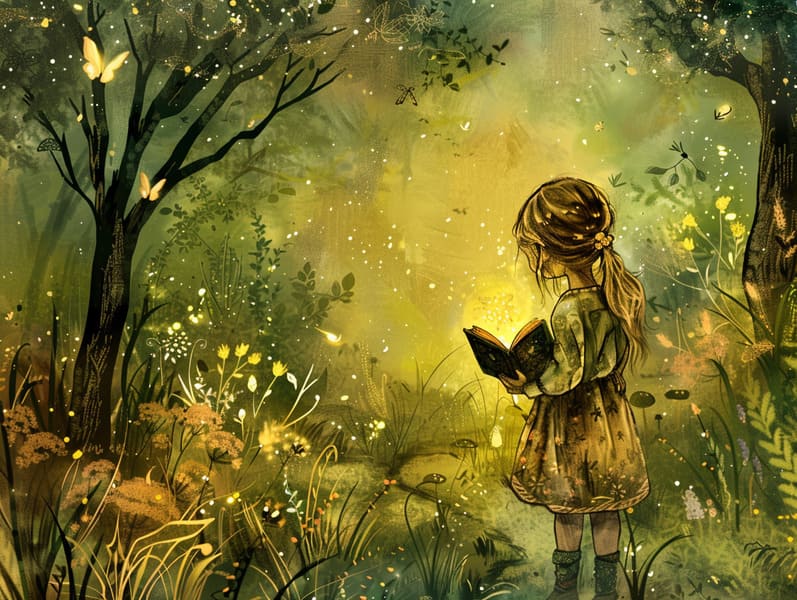
Ancient fairy tales have enduring presence. These stories have been passed down from one generation to the next ages before they were ever recorded. They sprang from a variety of civilizations, including Western traditions. They were initially narrated among adults, often carrying themes and messages reflective of the societal norms and beliefs of the time.
Jacob and Wilhelm Grimm, Jacob and Wilhelm (the Grimm brothers), were among the first to compile and release many of these beloved stories. Their anthology, "Grimm's Story Collection," included classics like "The True Bride," "Little Brother and Little Sister," and "The True Story of Snow White," which have since become classics in the world of timeless fairy tales. Similarly, H. C. Andersen's fantastical stories, such as "The Story of the Little Mermaid," and "The Duckling that Could," have captivated hearts worldwide, guaranteeing their place in the pantheon of famous fairy tales.
Despite their historical roots, these tales remain as relevant as ever, especially as nighttime stories for kids. These delightful tales are now available in different formats, including artistically illustrated books, enchanting animations, and digital fairy tales.
Their enduring popularity can be attributed to several whimsical characteristics:
Crucial Morals: Classic fairy tales often illustrate important moral lessons. Stories like "The Wolf and the Liar" teach the importance of being truthful, while "The Tortoise and the Hare" point out the values of perseverance and humbleness. These stories offer little ones clear distinctions between ethical and unethical, helping to shape their moral compass in a gentle yet meaningful way.
Warmth and Understanding: Old fairy tales frequently include personalities facing challenges and struggles, fostering listeners to feel with their struggles and rally behind their triumphs. For instance, "Beauty's Beast" demonstrates the value of seeing beyond looks to acknowledge the true being of a person, nurturing awareness and knowledge.
Cultural Recognition: Many timeless fairy tales are rich in the cultural contexts from which they emerged. Understanding these stories can provide illuminating insights into different ways of life, encouraging a sense of world appreciation and understanding.
Creativity and Imagination: The enchanted elements in fairy tales—mythical creatures—boost children’s imaginations. These narratives take readers to extraordinary realms, engendering fantasy-filled thoughts and a sense of marvel that remains a lifetime.
Traditional fairy tales are not only whimsical but also informative. They serve as charming tools in fostering various mind and heart abilities in young readers. When ancient fairy tales are recited, they enhance verbal skills by bringing new phrases and sophisticated sentence structures. This practice also strengthens auditory perception and focus, as young ones listen intently, eager to see what happens next.
Furthermore, contemplating the themes and characters of traditional fairy tales can advance thinking skills and critical thinking. The young are guided to pinpoint patterns, anticipate outcomes, and understand cause and effect. These talks also advance the young communicate their thoughts and feelings, boosting their emotional intelligence.
In today’s information age, the availability of internet fairy tales has made these tales more within reach than ever. Internet resources and digital apps extend extensive collections of children's fairy tales that can be accessed or heard anytime, anywhere. Fairy tales spoken are particularly favored, providing an interactive way for young readers to engage with these fascinating tales. Audio stories and read-to-me videos bring characters and settings to life, often complemented by entrancing musical scores and harmonies that enrich the tale-telling adventure.
The enduring charm these guys of traditional fairy tales lies in their ability to evolve to today's society while sustaining their core values. Contemporary versions of these stories often present more multicultural characters and modern settings, making them meaningful to today’s audience. However, the fundamental themes of valor, goodness, and fair play remain unchanged, continuing to affect listeners of all ages.
Timeless fairy tales also offer a sense of warmth and homeliness. They extend a well-arranged narrative with a unmistakable beginning, middle, and end, often winding up with the conclusion of conflicts and the triumph of virtue over corruption. This constancy can be placating for little ones, providing a sense of dependability in an fluid world.
Traditional fairy tales continue to captivate and enlighten new generations, maintaining their splendor and importance in modern society. As kids' bedtime tales, they introduce a perfect blend of fantasy and learning, advancing moral values, empathy, and creativity. The prevalence of online storybooks and the widespread nature of fairy tales recited assure that these classic fairy tales remain within reach to new generations.
By safeguarding and recounting these narratives, we continue to cherish the rich tapestry of narrative artistry and cultural heritage. Whether you are experiencing a gorgeously illustrated book, discovering a web-based library, or playing an read-aloud story, the charm of famous fairy tales is always within reach. These narratives emphasize of the endless strength of narratives and its ability to tie us across eras and regions.
No matter if you are experiencing a beautifully illustrated book, experiencing a web collection, or listening through an read-aloud story, the splendor of timeless fairy tales is always within reach.
These tales demonstrate of the perpetual magic of tales and its ability to hold us together across generations and cultures, weaving a spell that delights and instructs alike.